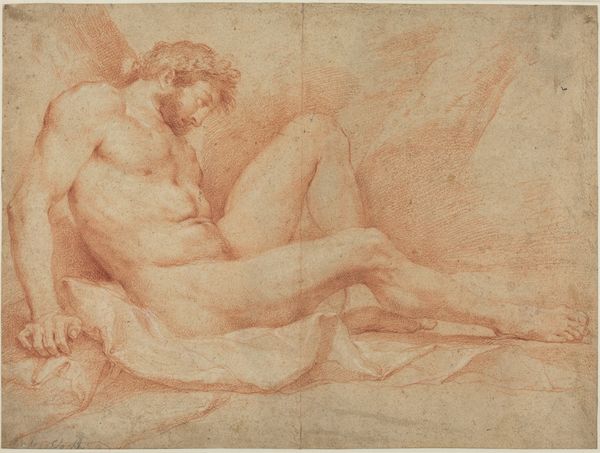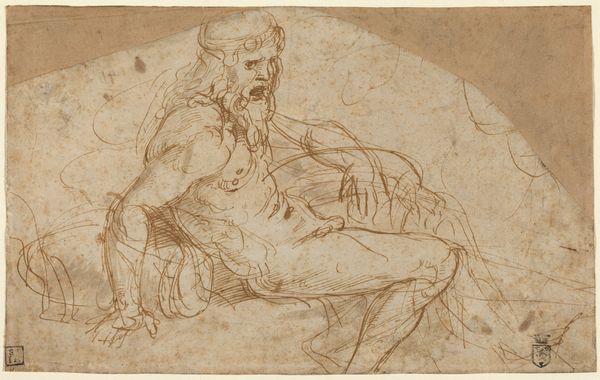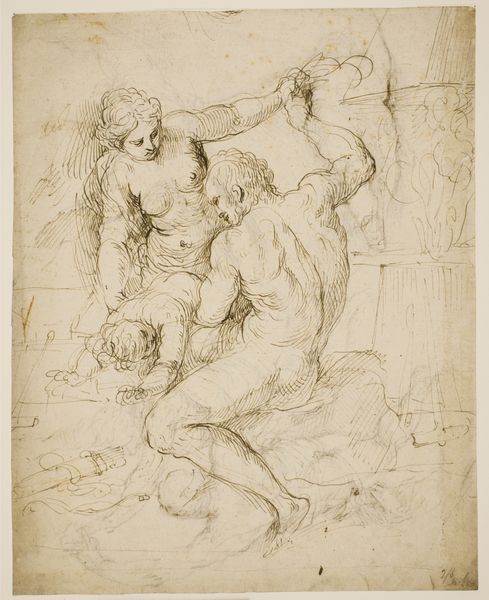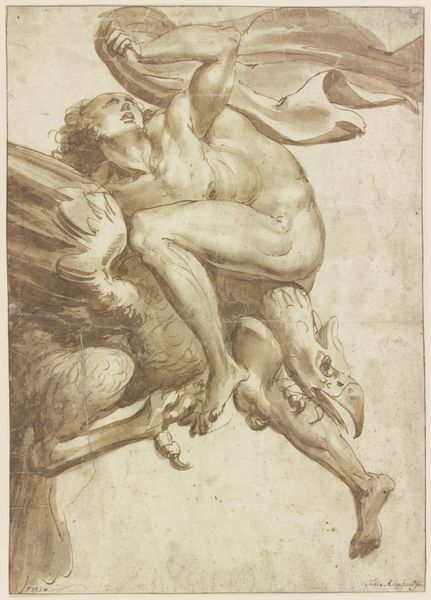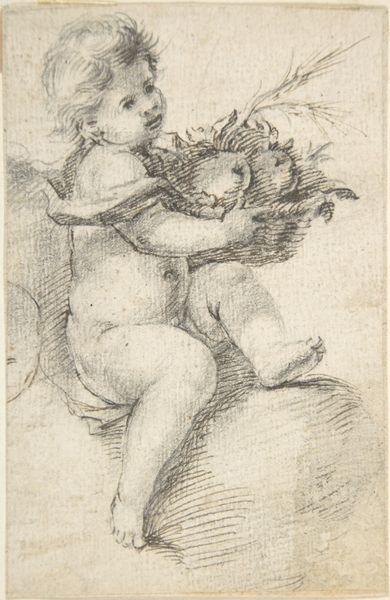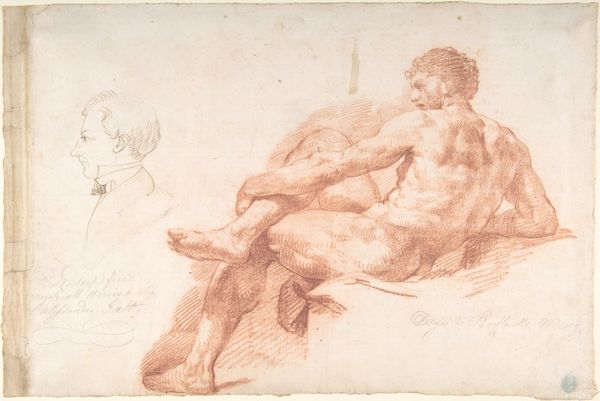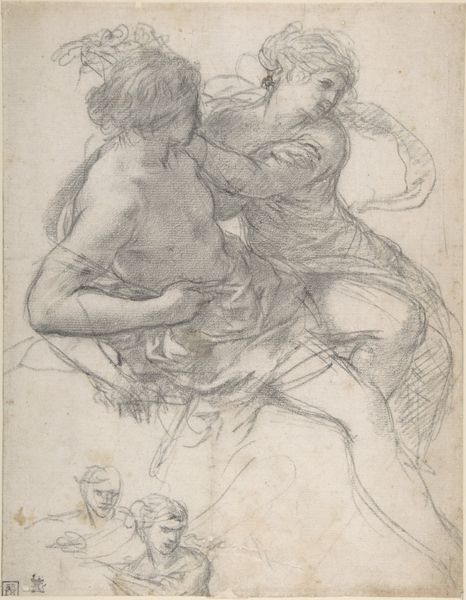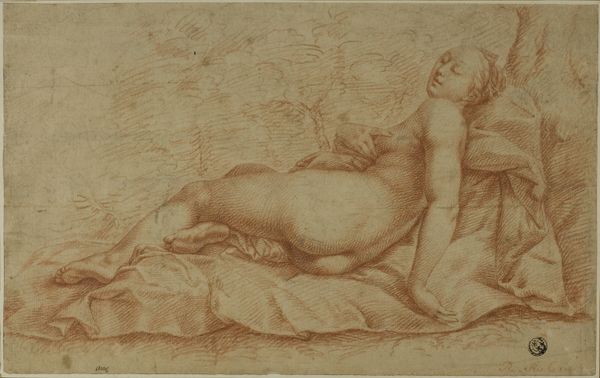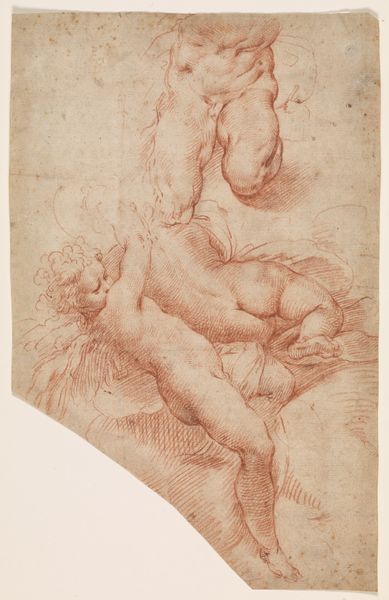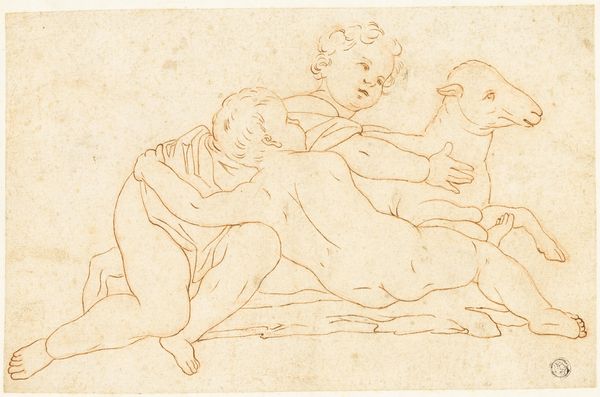
drawing, print
#
portrait
#
drawing
# print
#
figuration
#
11_renaissance
#
portrait drawing
#
history-painting
#
northern-renaissance
#
nude
#
christ
Dimensions: 6 11/16 x 9 7/16 in. (16.9 x 24.0 cm)
Copyright: Public Domain
Curator: What hits me first is the intensity in his face, the raw vulnerability laid bare in this…oddly casual pose. Editor: Indeed, odd is a good word. What we are looking at is "Ecstatic Christ," a drawing done between 1507 and 1514 by Hans Baldung, part of the Northern Renaissance. He was a student of Dürer, right? One of the true Renaissance men! But this isn't typical of the master at all. Curator: Exactly. It's unnerving! I feel almost like I'm intruding on a very private moment. There's Christ, but there is a sense of a deeply personal emotion, as if he has momentarily lost that godly poise. You can tell this isn't a grand statement in oil paints but the immediacy and starkness of line of ink on paper makes the message palpable. Editor: Absolutely, the medium matters. As a print, it implies wider dissemination. It forces questions of the role of the church at the time, and challenges viewers who perhaps were beginning to experience a fissure of faith and doctrine with burgeoning science, humanism and political upheaval. This Christ is far removed from authority. Curator: And he's lounging. Not suffering, but reclining in the grass or on the earth, his head thrown back as if utterly overwhelmed by…what? Is it grief? Joy? It's ambiguous, and profoundly human. And what does it mean for this traditional figure to have a strong, nearly muscular, form? Editor: It's interesting to see the religious figure rendered nude too; but here the slight drapery doesn't sexualize but signifies his vulnerability, emphasizing a theme of revelation but also the act of challenging norms. What norms are expected when presenting the savior? This Christ deviates from typical interpretations of biblical portrayals as all-powerful but instead represents humanity and its failings. It evokes sympathy as the viewer confronts this new image and reconsiders their stance within societal expectation. Curator: It feels like an invitation to empathy and self-reflection. It asks you to step into Christ’s… bare feet, so to speak, and feel with him. A challenge even now, to see strength and godliness alongside exposed human frailty. Editor: Agreed. And that ambiguity ensures the piece resonates centuries later. "Ecstatic Christ" is truly revolutionary! I leave today having learnt a new way to reflect on faith and doctrine; thank you for enlightening me!
Comments
No comments
Be the first to comment and join the conversation on the ultimate creative platform.
